What I’ve Learnt at Montrose Basin
As my internship is coming to an end I have decided to make a blog telling just how much I have learnt over the past 3 months here at the Montrose Basin Visitor Centre!
I live just outside of Montrose but am ashamed to admit that I had only visited the Visitor Centre a few times until this June. I had taken part in events throughout school and clubs but never spent enough time at the windows to appreciate how large and diverse the Montrose Basin actually is. Birds were not something I knew well at all, but that was about to change as soon as I stepped through the Visitor Centres doors.
The first bird I learnt whilst volunteering was the Eider Duck. Its distinctive black and white feathers and wedge shaped beak made it an easy bird to start with. Of course, the fact that basin is full of them also made them a simple start to my bird identification. They could be seen swimming around the basin during high tide and resting on the shore at low tide, and a few weeks into my internship we even started seeing crèches of up to 20 chicks swimming around with multiple females. Though, as soon as I was finding the eider an easy spot they began to moult and change into eclipse so it seemed I had to start all over again to learn them!
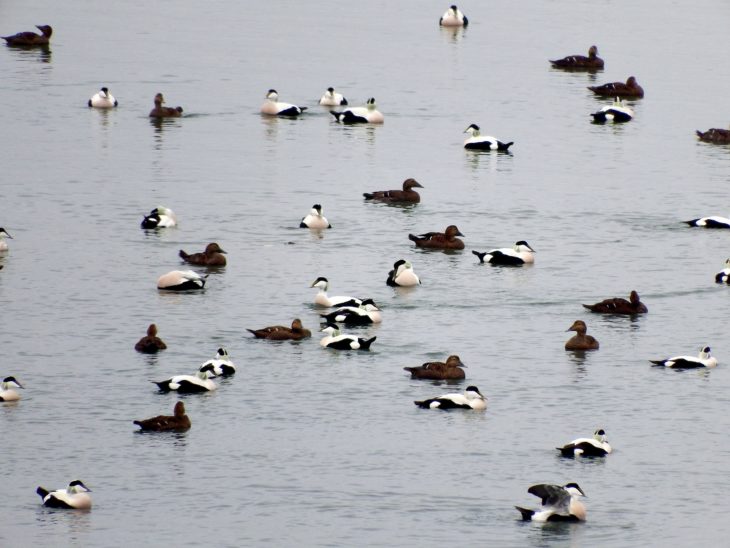
Another large bird who I saw regularly was the Osprey. It’s extremely large size, and the fact whenever it caught a fish it was mobbed by gulls, meant I could easily identify it and point it out to our enthusiastic visitors. As we have been seeing so many they haven’t felt like such a big deal to me, but whenever we mention the possibility of seeing one out our windows our visitors always seem so excited and impressed! It makes you really want one to come and fish when so many visitors are waiting hopefully.
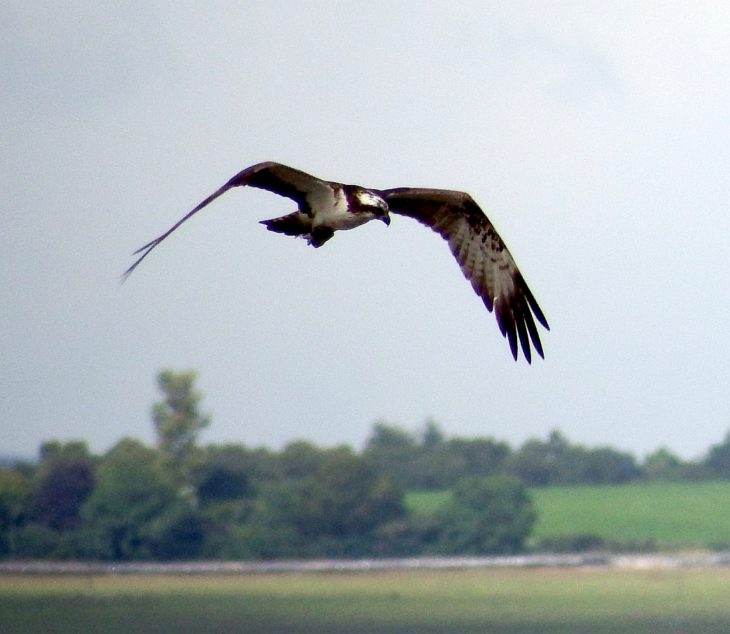
During high tide the basin can seem quiet, however the feeders never are! We constantly have Tree Sparrows, House Sparrows, Greenfinch, Goldfinch, Blue Tits and Great Tits occupying the feeders. Occasionally we will also see a Dunnock or Robin. These have been my favourite birds to watch as they are so fast paced and entertaining to watch! They also are so vivid in colour making them good birds to learn for people new to birds like me! Another good spot is the rabbits that appear under the feeders. They’re always great to point out for our younger visitors who can’t quite work the scopes or binoculars just yet.
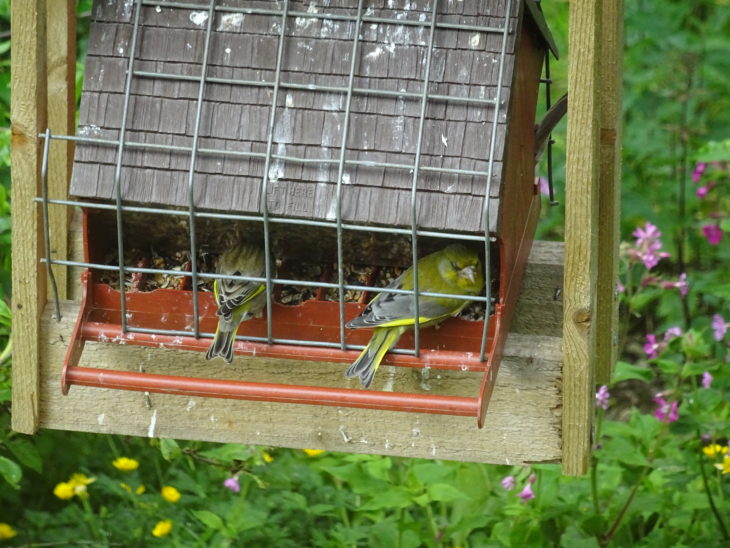
Over the last month the wading birds have started to make their way back to the basin in plentiful numbers. Lots of Redshank and Oystercatchers can be seen during low tide however, the most notable bird we have had has been the Lapwing. There are over a hundred of them resting on the shore or flying over the basin throughout the day. They can be spotted by the small tuft on the back of their heads and their colour, which looks black and white but is actually more of a green.
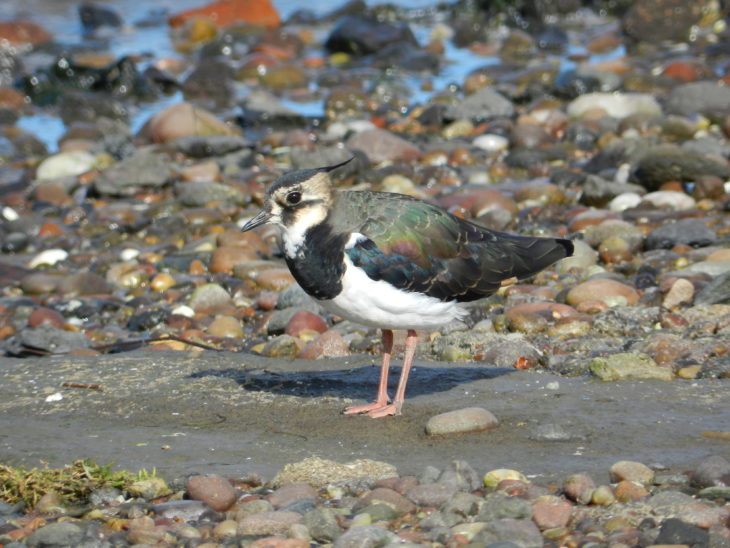
Of course, there are plenty of other species of wildlife I have encountered during my internship. Counting the seals lying out on the sand is an enjoyable task, especially when they are playing around at the edge of the water. We spotted a Roe Deer one evening right below the Visitor Centre’s Windows and watched as it gracefully trotted in front of the Centre and hopped into the field next door. Two very abundant but slightly annoying species we have seen a lot of has been Corn Lice and Hoverflies. The hot summer has brought thousands of these insects into the Visitor Centre and we seem to just keep finding them everywhere! Though this has been irritating I have actually learnt a lot about the Hoverfly and how to identify it from a wasp which has been very useful for avoiding stings.
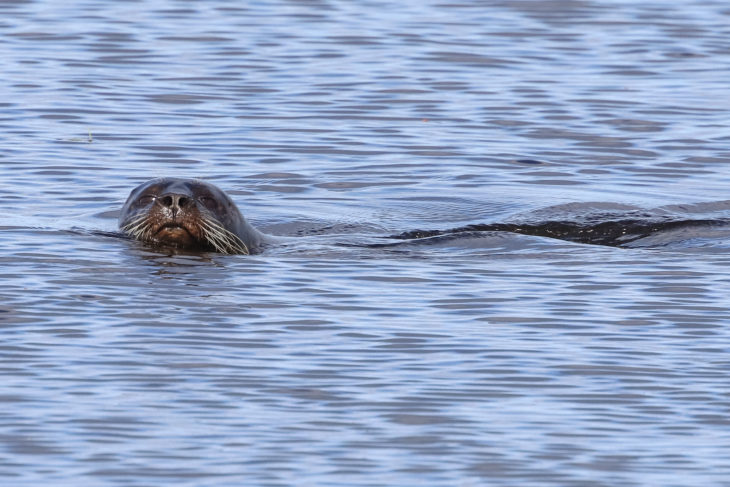
Over the past 3 months I have learnt so much about the wildlife of my local area, yet have barely scratched the surface of all the different species that can be seen. It was challenging to learn so many new things so quickly but very rewarding when I was eventually able to help identify the birds with visitors. I am still holding out hope that I may see the Kingfisher before my internship is through as I’ve seen so many images of where it sat last year that I’m desperate to see it for myself! However, I won’t see the Pink-Footed Geese whilst on my internship but I am sure I will hear them around town once they arrive.
The Montrose Basin Visitor Centre is a very welcoming and lovely place. The staff and volunteers are very knowledgeable and helpful in informing visitors and new volunteers on what can be seen over the basin and how to identify birds from each other. I’m very thankful for everything I have learnt and will continue to try and identify more birds both in my garden and out around the countryside. I would recommend volunteering with the Scottish Wildlife Trust, especially at Montrose Basin, to anyone who wants to learn more about their local wildlife and help others to see how diverse nature can be!
– Lucy Smith (Visitor Centre Intern)
Help protect Scotland’s wildlife
Our work to save Scotland’s wildlife is made possible thanks to the generosity of our members and supporters.
Join today from just £3 a month to help protect the species you love.
Preface
As my internship is coming to an end I have decided to make a blog telling just how much I have learnt over the past 3 months here at the …
